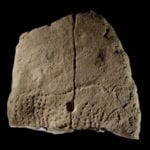 Music
Music  Music
Music  History
History 10 Less Than Jolly Events That Occurred on December 25
 Weird Stuff
Weird Stuff 10 Funny Ways That Researchers Overthink Christmas
 Politics
Politics 10 Political Scandals That Sent Crowds Into the Streets
 Weird Stuff
Weird Stuff Ten Bizarre Facts About The Doge Meme
 Our World
Our World 10 Ways Your Christmas Tree Is More Lit Than You Think
 Movies and TV
Movies and TV The 10 Coolest Stars to Set Sail on The Love Boat
 History
History 10 Things You Didn’t Know About the American National Anthem
 Technology
Technology Top 10 Everyday Tech Buzzwords That Hide a Darker Past
 Humans
Humans 10 Everyday Human Behaviors That Are Actually Survival Instincts
 Music
Music 10 Surprising Origin Stories of Your Favorite Holiday Songs
 History
History 10 Less Than Jolly Events That Occurred on December 25
 Weird Stuff
Weird Stuff 10 Funny Ways That Researchers Overthink Christmas
Who's Behind Listverse?

Jamie Frater
Head Editor
Jamie founded Listverse due to an insatiable desire to share fascinating, obscure, and bizarre facts. He has been a guest speaker on numerous national radio and television stations and is a five time published author.
More About Us Politics
Politics 10 Political Scandals That Sent Crowds Into the Streets
 Weird Stuff
Weird Stuff Ten Bizarre Facts About The Doge Meme
 Our World
Our World 10 Ways Your Christmas Tree Is More Lit Than You Think
 Movies and TV
Movies and TV The 10 Coolest Stars to Set Sail on The Love Boat
 History
History 10 Things You Didn’t Know About the American National Anthem
 Technology
Technology Top 10 Everyday Tech Buzzwords That Hide a Darker Past
 Humans
Humans 10 Everyday Human Behaviors That Are Actually Survival Instincts
10 Facts About France’s ‘Untouchables’
In the ancient Hindu traditions of India, a member of the Dalit caste is considered “untouchable.” Others, those not belonging to any caste, can also be “untouchable.” Despite the work of modern India’s founder, Mahatma Gandhi, the untouchables of India are still oppressed in many ways.
Besides being barred from marrying outside of their caste (this policy is called endogamy), many still live in secluded parts of villages and cities. Most work in ill-paid professions that others regard as “dirty.” Despite the governments of India and Pakistan legally recognizing the rights of untouchables, the caste still suffers the stings of prejudice.
The people of the West like to believe that such stringent caste restrictions are a thing of the East. After all, the closest equivalent to a caste system in North America and Europe is social class, a somewhat dynamic hierarchy that can change with circumstance. Although the working class and the working poor in the developed world are not able to move up as much as they would like to believe, they probably feel more free than India’s untouchables.
In France, one of the true hated castes of the West exists. Called the Cagots, these people of the Pyrenees Mountains have long been despised, sequestered, and hidden from modern life. The strangest thing is that nobody seems to be sure why the Cagots have been treated this way.
10 A Vanishing People

By the 21st century, the Cagots of France had seen their numbers dwindle significantly. For over 1,000 years, the Cagots of southwestern France existed on the periphery of European culture, and now their unique identity and history may evaporate for good.
Around 2008, British newspapers and magazines began profiling Marie-Pierre Manet-Beauzac, the woman known as “the last Cagot.” Manet-Beauzac’s uniqueness, of course, was her willingness to tell the media that she is indeed a Cagot. For a mother of three children, such an admission could be dangerous.
Manet-Beauzac had to find out about her Cagot ancestry through genealogical research, which uncovered the fact that her bloodline included many carpenters, basket weavers, and severely impoverished peasants. Such history is an indication of Cagot ancestry, for these mountain people have been tied to various trades since their first appearance in the history books in the 11th century.[1]
Today, we know far more about historical oppression of the Cagots than about how many exist in France and northern Spain today. It could very well be that the culture of the Cagots may soon disappear for good.
9 Stereotypes
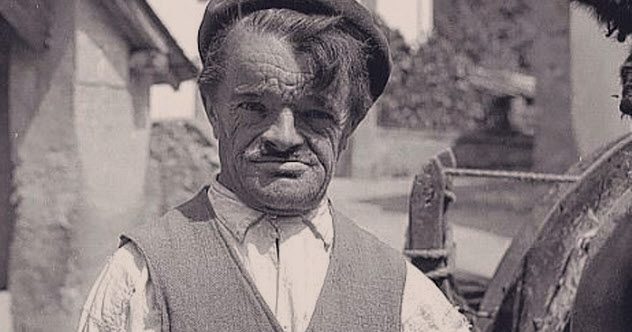
Throughout much of their history, the Cagots were regarded as a diseased people. Their neighbors told stories about how all Cagots had misshapen heads, webbed feet, and missing earlobes. Today, the term “Cagot ear” is still used to describe an ear without an earlobe.
The stories about physical deformities among the Cagots are probably indicative of high levels of inbreeding. Given that Cagots were forced to practice endogamy for much of their history, it would not be surprising if many were highly inbred.
Others stereotypes of the Cagots include rumors about them having green blood that seeped from their bellies on Good Friday. Cagot skin was said to emit a terrible odor that could ruin apples and other fruit simply through touch. Some even claimed that the Cagots were a band of black magicians who performed devilish rights in their isolated villages.[2]
In the Middle Ages, local laws were enacted to make sure that the “dirty” Cagots kept clear of the “pure” French. Stereotypes likely played a large role in this legal persecution.
8 Possible Origin: Moorish Soldiers

One of the more enduring theories about why the Cagots were once so hated originates in nearby Spain. In 711, an Islamic army led by Arabs and composed mostly of Berber and other tribal soldiers from North Africa conquered Visigothic Spain (which included parts of modern-day Portugal). As a result, Spain became part of the Umayyad Caliphate based in Damascus.
This would not hold, however, and the city of Cordoba declared Islamic Spain independent of the Abbasid Caliphate based in Baghdad in 929. Contrary to the popular notion of a highly tolerant Islamic state in Spain, the Cordobans left the Abbasid realm because they disagreed with the lack of jihadist fervor coming out of the highly advanced court in Baghdad.
For hundreds of years, Christian knights in Spain and France fought innumerable battles against the Islamic rulers based in Andalusia. Following the failed expedition into France in 732, Islamic rule in Spain began a very slow but steady decline as several Christian kingdoms in the country fought and won their independence.
At several points during the Middle Ages, fervently jihadist Berber dynasties from North Africa, such as the Almoravids and Almohads, tried to reestablish Islamic control in Iberia. They brought with them renewed religious strife between Muslims, Christians, and Jews.
One popular theory claims that the Cagots of France were directly descended from Muslim soldiers from Spain who ultimately migrated northward. Some claim that the Cagots became loathed by their Christian neighbors because of their Berber or Moorish blood. It has even been suggested that Cagots contain sub-Saharan African DNA, for Islamic Spain had one of the largest black populations in Europe during the Middle Ages.[3]
7 Possible Origin: Descendants Of The Visigoths
The theory of Moorish ancestry for the Cagots is primarily based on the idea that Cagots normally have darker skin than their non-Cagot neighbors. However, some DNA analysis has proven that Cagots are not genetically different from other populations in the Pyrenees. In his book The Discovery of France, Graham Robb says that the Cagots are unremarkable in terms of their genetics. This seems to indicate that the Cagots are thoroughly European in origin.
One of the possible origin stories about the Cagots is that they are the descendants of the Visigoths, a Germanic tribe that ruled Spain and parts of Portugal and France after the fall of the Western Roman Empire.
Although called “barbarians” by the Romano-Iberian population over which they ruled, the Visigoths were actually a highly cultured people who did much to maintain the Greco-Roman and Christian heritage of Spain. Writer Dario Fernandez-Morera claims that the Visigoths were the most “Romanized” of all the Germanic tribes and that their kingdom kept up warm relations with Constantinople.[4]
The Umayyad conquest of the eighth century destroyed much of what could have been studied about the Visigoths. It is entirely possible that some of these Germanic people sought shelter in France, which at the time was ruled by another Germanic people, the Franks.
Although this is highly plausible, Visigothic extraction does not explain centuries of hatred toward the Cagots. After all, it was the Visigothic Kingdom of Asturias that saved Christian civilization in Spain by defeating an Umayyad army at the Battle of Covadonga.
6 Possible Origin: Cathars
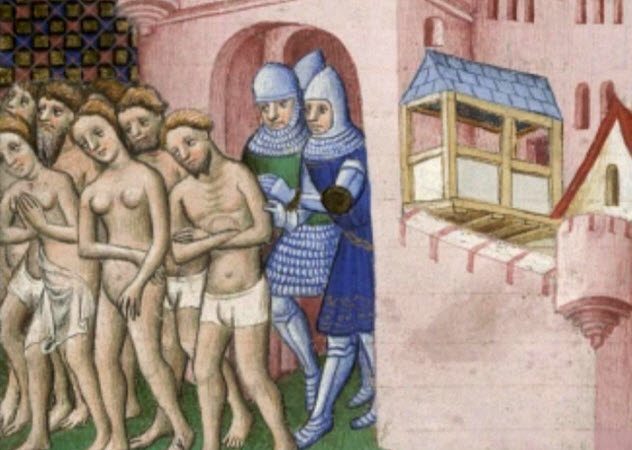
One theory purports to explain the long-standing hatred toward the Cagots. According to this view, the Cagots are the descendants of the Cathars, a religious sect that was expelled and expunged from French life during the Albigensian Crusade.
In the early 13th century, the Catholic Church and the king of France sought to stamp out the independence of the local rulers of Languedoc, a region in southern France. Beginning in 1208, Pope Innocent III declared an official crusade against Raymond V, Count of Toulouse. The Pope excommunicated Raymond and sent the warlord Simon de Montfort after him.
The crusade would see a series of bloody sieges in southern France, especially near the Cathar stronghold of Carcassonne. Ultimately, the Catholic Church and the French crown in Paris proved victorious and Languedoc was incorporated into the realm ruled from Paris.
Catharism was virtually wiped out. The once-popular faith had had strong ties to southern France. Cathars called themselves “good Christians” and believed that the church in Rome had corrupted Christian practices. The Cathars had no priesthood, but they did have an elite group of enlightened elders called “Goodmen.”[5]
In many ways, the Cathars seem to be a prototype for the many Protestant sects born during the religious wars of the 16th and 17th centuries. However, the Cathar belief in dualism, or the belief in one good God and one bad God, sets them apart as Christian Gnostics.
The hated Cathars may have gone into hiding following the fall of Carcassonne. Did they become the Cagots? That may never be answered. However, there is evidence from the time that shows that anti-Cagot bias predated the war against the Cathars.
5 Possible Origin: A Medieval Guild
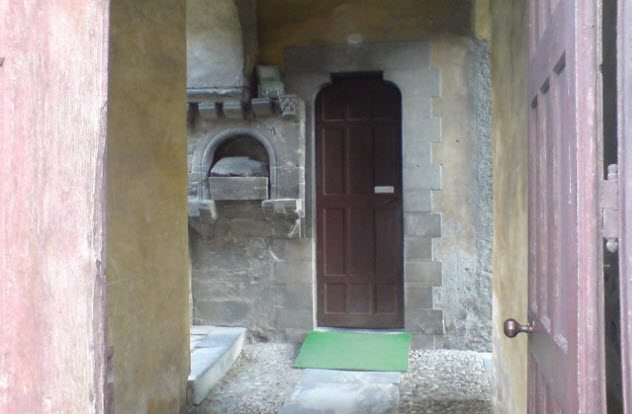
In the medieval world, entire industries and their workers were often set up as guilds. These guilds were more than just early labor unions. They often provided mutual aid, insurance, and protection to their members. Some guilds also enjoyed economic monopolies, meaning that no major construction project could be undertaken without the support of various guilds.
Due to their somewhat enclosed and secretive nature, many guilds became the focal points of rumor and innuendo. Indeed, many of today’s theories about the Freemasons may come from the group’s purported origins as a medieval stonemason guild.
Given that the Cagots have mostly been employed as carpenters throughout their history, it may be possible that they originated as a guild. Historian Graham Robb offered up the idea that economic rivalries between Cagot craftsmen and others during the Middle Ages led to the creation of social prejudices.[6]
4 Mark Of Shame

In the annals of European history, the yellow Star of David is often upheld as an infamous reminder of legalized prejudice. During the reign of the National Socialists in Germany, Jews were forced to wear the yellow star on their clothing so that everyone would know that they were unwanted outsiders in the German body politic.
During the Middle Ages, local warlords and some kings in Western Europe made the Jews wear distinctive marks on their clothing to indicate their identity. The same policy was enacted on the Cagots.
The symbol that the Cagots were forced to wear was a red or yellow goose’s foot.[7] This mark was pinned to their tunics as a reminder that Cagots had webbed feet and were to be avoided to keep free of disease. This mandate would not be removed throughout France until the French Revolution of the 18th century.
3 Religious Restrictions
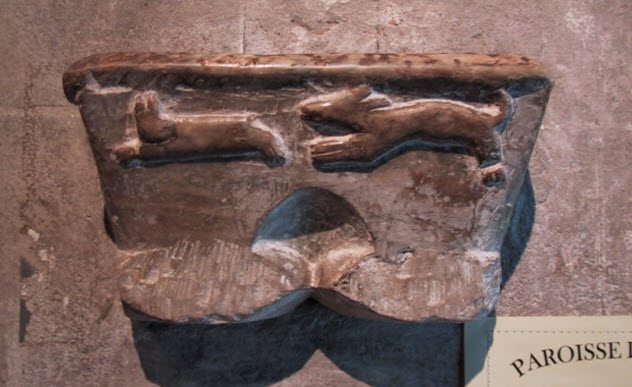
In medieval times, the Christian faith and its practice defined life in Europe. The Catholic Church in France was the source of knowledge, social mores, and legal legitimacy. Therefore, Catholic restrictions on the Cagots indicated that something about them displeased the church and God.
Cagots were forced to enter churches via a side entrance. Cagots were also told to use separate holy water fonts. Harsh punishments were meted out to any Cagot who dared to break these rules.
In the 18th century, one wealthy Cagot living in the Pyrenees used the non-Cagot font and had his hand removed for the infraction.[8] Such prejudice in Christian France existed in both the Catholic and Huguenot (Protestant) churches of the country.
2 End Of Legal Persecution

By the 17th century, the increasingly centralized French state began passing laws against anti-Cagot prejudice. In 1681, the parliament in the city of Rennes made it illegal for any citizen to persecute Cagots.
In 1723, following a brawl between a Cagot and several local councillors in the French town of Biarritz, the parliament of Bordeaux decided in favor of the Cagot Miguel Legaret and fined the councillors. The decision also set corporal punishments for anyone who used anti-Cagot prejudice as a reason to assault a Cagot.[9]
The last legal restrictions on the Cagots were overthrown by the French Revolution of 1789. By that time, many Cagots decided to relocate to French cities like Brest in Brittany and Paris. But even there, anti-Cagot bias ran deep.
By as late as the 19th century, the city of Brest still had a separate neighborhood populated by Cagots. Similarly, in 1847, it was found that Cagots were still being buried in separate cemeteries in the communes of Dognen and Castetbon.
In 1964, a teacher in Salies-de-Bearn noted that many of her children and their families still mocked those whom they believed were Cagots. Although official persecution may have ended in the 18th century, popular persecution of the Cagots never ended.
1 Japanese Parallel

Many have noted the similarities between the Cagots and the Dalits of India. Some have noticed also that the Cagots bear a striking resemblance to the Burakumin of Japan.
The Burakumin are regarded as “untouchables” because they have long been associated with unclean professions.[10] The Burakumin specialize as butchers, sanitation workers, undertakers, and gravediggers. These economic restrictions are believed to date back to the medieval world, when Japanese laborers were secluded in their own communities in feudal villages.
Similarly, the Burakumin and the Eta, which means “abundance of filth,” could have been killed without reason by any samurai. The reason given for these harsh restrictions is that the Burakumin and other “untouchables” worked with death and dead objects, which in turn tainted them and their offspring.
Like the Cagots, it could be that prejudice against the Burakumin is based on economic marginalization.
Benjamin Welton is a freelance writer based in Boston.
For more fascinating facts about France, check out Top 10 Fascinating Facts About France and 10 Iconic French Things That Aren’t Entirely French.

